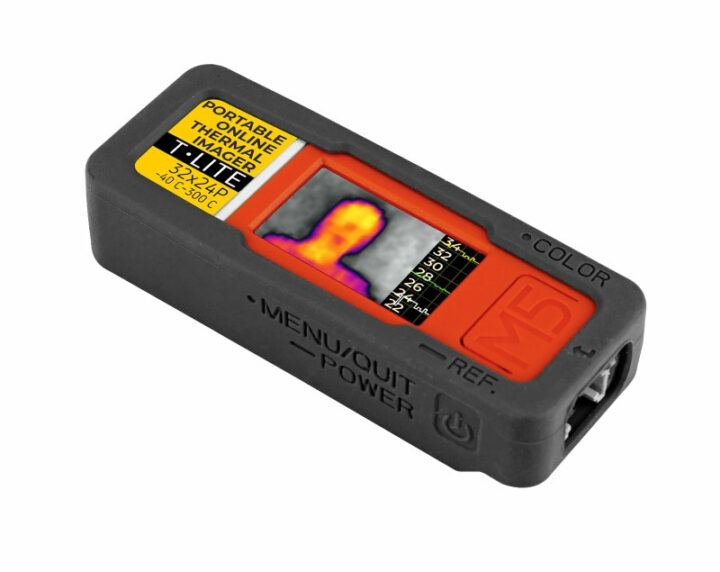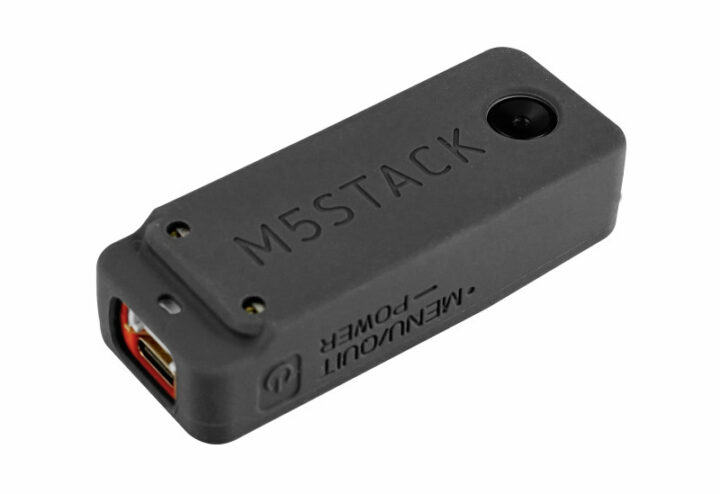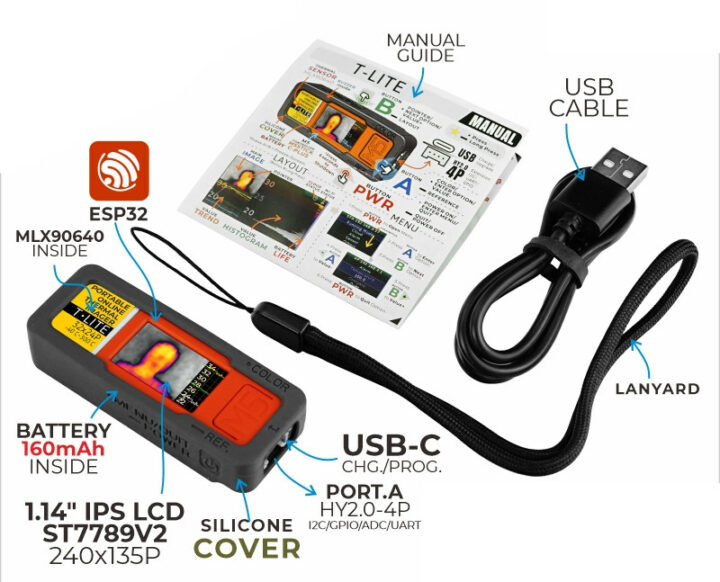M5Stack T-Lite is a Wi-Fi thermal imager with the same MLX90640 IR array thermal camera found in the M5Stack Thermal Camera 2 Unit plus a 1.14-inch color display to visualize the results on the device itself.
Based on the ESP32-PICO-D4 system-in-package with WiFi and Bluetooth, the solution allows the user to access the 32×24 pixels thermal image either on the built-in display, or streamed to the local network or the cloud.
M5Stack T-Lite specifications:
- SiP – ESP32-PICO-D4 system-in-package with ESP32 dual-core Tensilica LX6 microcontroller with 448 KB ROM and 520 KB SRAM, 2.4 GHz WiFi 4 and Bluetooth 4.2, and a 4MB SPI flash
- Thermal camera – Melexis MLX90640 infrared (IR) sensor with 32×24 pixels IR array, range: -40°C to 300°C with +/-1.5°C resolution, FoV: 110°x75° (See datasheet)
- Display – 1.14 inch color TFT LCD with 240×135 resolution, ST7789v2 driver
- Expansion – 4-pin Grove HY2.0-4P interface (“Port A”) with I2C, GPIO, ADC, or UART
- Misc – Passive buzzer, SPM1423 PDM MEMS microphone
- Battery – 3.7V/160 mAh battery
- Power Supply – 5V @ 0.5A via USB Type-C port, AXP192 PMU
- Dimensions – 69 x 26.6 x 6.35mm
- Weight – 30.1 grams
- Temperature Range – -40°C to +85°C
The documentation only provides information about the hardware, although the documentation’s webpage does integrate a web-based firmware flasher that currently says “Current Product Don’t Have Test Firmware”. Having said that, I could also find the firmware’s source code to be built with Platform.io. The hardware is basically an M5StickC-Plus with an MLX90640 Thermal HAT so it should be programmable with UIFlow, MicroPython, and Arduino.
The M5Stack T-Lite thermal imager can be used for temperature detection warning, circuit temperature anomaly monitoring, non-contact temperature measurements, intrusion/movement detection, and visual IR thermometers.
The M5Stick T-Lite Wi-Fi thermal camera ships with a 20cm USB Type-C cable, a lanyard, and a user manual/quick start guide. It is sold for $79 plus shipping. The company also launched the ESP32-S3 version of their Atom controller with the AtomS3 development kit with a 0.85-inch display now available for $15.50.

Jean-Luc started CNX Software in 2010 as a part-time endeavor, before quitting his job as a software engineering manager, and starting to write daily news, and reviews full time later in 2011.
Support CNX Software! Donate via cryptocurrencies, become a Patron on Patreon, or purchase goods on Amazon or Aliexpress







